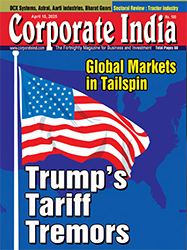Want to Subscribe?
Read Corporate India and add to your Business Intelligence

![]() Unlock Unlimited Access
Unlock Unlimited Access

Economy
Published: Mar 14, 2023
Updated: Mar 14, 2023
The financial crisis of 2008 was a contagion that swept across the world, while 2020 was a medical crisis that led to an economic crisis, both of which required significant intervention from central banks and governments to contain. However, in retrospect, central banks should have curtailed their stimulus measures in 2021 and started tightening. Now, the world is sitting on an over-financialized system, with financial outstanding at 400% of actual global GDP. The current situation is further complicated by the weaponization of energy supplies and the dollar, as well as the emergence of de-globalization, friend shoring, and de- dollarization. This article explores the lessons learned from past financial crises and offers recommendations for navigating the complexities of the current crisis.
Fortunately, global central banks have already implemented 282 rate hikes, leaving room to hold and cut as needed. However, some, such as the Bank of Canada, have acknowledged the looming issue of growth and are cautious about overextending the rate hike cycle. The US Fed, on the other hand, is following an outdated economic model, which may not be suitable for the highly interconnected and over-leveraged world of today.
Inflation has taken root, and the monetarists and Austrian school thinkers were correct in their predictions. However, tackling inflation cannot be in isolation, and price stability must be ensured while maintaining present economic levels. The 1970s oil embargo and persistent inflation threats are valuable lessons in this regard.
Raising rates is a blunt instrument that works with a lag, and it destroys demand blindly across the economy. Calibrating the appropriate rate hike is challenging, especially given the perma crises nature of politics and economies. The banking issues emerging in the US serve as a pointer of the intended consequences of financial conditions being tightened to engineer a fall in demand and inflation. The risk is of unintended consequences like bank failures and wider contagion spreading.
The bond markets have already panicked and factored in the worst, while the stock markets have been slower to react. The US government needs to have contingency plans in place to tackle any domino effects in the financial markets, which could lead to wider contagion.
The lessons learned from past financial crises should guide policymakers as they navigate the complexities of the current crisis. Rather than following outdated models, policymakers must be agile and show their forecasting acumen to make sound decisions. Recommendations include stopping rate hikes now, being prepared with contingency plans, and moving the inflation target from 2% to 3% +/- 1%. The path forward is challenging, but with proper planning and foresight, it is possible to mitigate the risks and achieve economic stability.

April 15, 2025 - First Issue

Industry Review

Want to Subscribe?
Read Corporate India and add to your Business Intelligence

![]() Unlock Unlimited Access
Unlock Unlimited Access
Lighter Vein

Popular Stories
Archives
